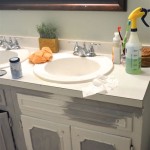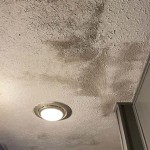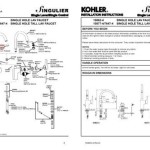How To Remove a Bathroom Drain Pipe
Removing a bathroom drain pipe can be a necessary task for various reasons, including replacing a damaged pipe, upgrading the plumbing fixtures, clearing a stubborn clog, or undertaking a larger bathroom renovation project. This process, while seemingly daunting, can be accomplished with the right tools, a systematic approach, and a clear understanding of plumbing principles. If there is doubt concerning the procedure, consulting with a qualified plumber is always recommended.
This article will provide a detailed guide on how to safely and effectively remove a bathroom drain pipe. It will cover the preparation steps, required tools, and the disassembly process, including the identification of different pipe connections, potential problems that may arise, and tips for preventing leaks upon reassembly. A thorough understanding of these steps ensures a smoother and more successful removal.
Preparation and Safety Precautions
Before commencing any plumbing work, it is crucial to prioritize safety and take necessary precautions. This includes gathering the appropriate tools and materials, protecting the work area, and understanding the potential hazards involved. Neglecting these preliminary steps can lead to injuries, property damage, or plumbing system complications.
Firstly, turn off the water supply to the bathroom sink. This is typically accomplished by locating the shut-off valves under the sink. These valves are usually small, oval-shaped handles that can be turned clockwise to stop the water flow. If individual shut-off valves are not present, the main water supply to the house must be turned off. In this case, ensure that other household members are aware of the water shut-off to avoid inconvenience.
Secondly, gather the necessary tools and materials. A pipe wrench or adjustable wrench is essential for loosening and tightening threaded connections. A basin wrench, specifically designed for working in tight spaces under the sink, is also recommended. A screwdriver (both flathead and Phillips head) may be needed for removing mounting brackets or other hardware. A bucket or basin should be placed under the drain pipe to catch any remaining water. Protective gear, such as safety glasses and gloves, should be worn to protect against splashes, debris, and potential chemical exposure. A rag or towel is useful for wiping up spills and cleaning the work area.
Thirdly, assess the type of drain pipe being removed. Common materials include PVC (polyvinyl chloride), ABS (acrylonitrile butadiene styrene), and metal (usually brass or copper). The type of material will influence the tools and techniques required for removal. For example, PVC and ABS pipes are typically connected with solvent cement, requiring cutting tools, while metal pipes are often connected with threaded fittings that can be unscrewed.
Fourthly, understand the layout of the drain system. Typically, a bathroom sink drain consists of several components: the sink drain flange, the tailpiece, the P-trap, and the drain pipe that connects to the main drain line. The P-trap is a curved section of pipe designed to trap water and prevent sewer gases from entering the bathroom. Disassembling the drain system in a logical order will facilitate the removal process. It is advisable to take photographs of the drain system before disassembly to aid in reassembly.
Disassembling the Drain Pipe
With the preparations complete, the process of disassembling the drain pipe can begin. Proceed methodically, unscrewing or disconnecting each component in a sequential manner. Avoid excessive force, which can damage the pipes or fittings. If a connection is particularly stubborn, apply penetrating oil or heat to loosen it. If necessary, cutting the pipe may be required, but this should be done as a last resort.
Start by loosening the slip nuts that connect the tailpiece to the sink drain flange and the P-trap. Slip nuts are designed to be hand-tightened, but they may require the use of a wrench if they are particularly tight or corroded. Turn the slip nuts counterclockwise to loosen them. Once loosened, carefully slide the slip nuts and washers away from the connections. Be prepared for water to spill out as the connections are separated. Have a bucket ready to catch the water.
Next, disconnect the P-trap. The P-trap is typically connected to the tailpiece and the drain pipe with slip nuts. Loosen the slip nuts at both ends of the P-trap and carefully remove the P-trap. Be sure to clean out any debris or hair that may have accumulated in the P-trap. This is a common source of drain clogs.
If the drain pipe is connected to the main drain line with a threaded connection, use a pipe wrench or adjustable wrench to unscrew the connection. Apply penetrating oil to the threads if the connection is difficult to loosen. Turn the pipe counterclockwise to unscrew it. If the drain pipe is connected to the main drain line with a solvent-cemented connection, it will need to be cut. Use a pipe cutter or a hacksaw to cut the drain pipe as close as possible to the connection. Be careful not to damage the main drain line.
If the sink drain flange is being removed, it will need to be unscrewed from the sink. Loosen the nut underneath the sink that secures the drain flange. Turn the nut counterclockwise to loosen it. Once the nut is loosened, carefully remove the drain flange from the sink. Be sure to clean the sink opening before installing a new drain flange.
During disassembly, carefully inspect each component for signs of damage or corrosion. Replace any components that are damaged or worn. This will help to prevent leaks and ensure the longevity of the drain system.
Addressing Potential Problems and Ensuring a Secure Reassembly
The process of removing a drain pipe may present certain challenges, such as corroded fittings, stubborn connections, or hidden damage. Successfully addressing these issues requires careful observation, appropriate tools, and a willingness to adapt the approach as needed. A proactive approach to problem-solving minimizes the risk of complications and ensures a more successful reassembly.
One common problem is corroded fittings. Corrosion can make it difficult to loosen threaded connections and can weaken the pipes themselves. If a fitting is heavily corroded, it may be necessary to replace it. Before attempting to remove a corroded fitting, apply penetrating oil and allow it to soak for several hours. This can help to loosen the corrosion and make it easier to unscrew the fitting. If the fitting is still difficult to remove, use a pipe wrench to apply more leverage. Be careful not to damage the surrounding pipes or fittings.
Another common problem is stubborn connections. Over time, slip nuts and threaded connections can become difficult to loosen. Applying penetrating oil and using a wrench can often solve this problem. However, if the connection is still stubborn, consider using heat. A heat gun or propane torch can be used to heat the fitting, which will cause it to expand and loosen its grip. Be extremely careful when using heat, as it can damage the pipes or start a fire. Never use heat near flammable materials.
Hidden damage can also be a problem. Pipes can crack or corrode internally, making them weak and prone to leaks. Carefully inspect each component for signs of damage before reassembly. If any damage is found, replace the affected components. It is always better to replace a potentially problematic component than to risk a leak later on.
Before reassembling the drain pipe, thoroughly clean all of the components. Remove any old sealant, debris, or corrosion. This will help to ensure a tight and leak-free seal. Apply Teflon tape to all threaded connections to further improve the seal. Teflon tape is a thin, white tape that is wrapped around the threads of a pipe fitting. It creates a watertight seal when the fitting is tightened.
When reassembling the drain pipe, tighten all of the connections securely, but do not overtighten them. Overtightening can damage the pipes or fittings. Use a wrench to tighten slip nuts and threaded connections until they are snug. Then, give them another quarter turn. Check for leaks after reassembly by turning on the water supply and carefully inspecting the connections. If any leaks are found, tighten the connections further or disassemble and reassemble the connection with new sealant.
It is important to remember that plumbing codes vary by location. Before undertaking any plumbing work, consult with local building codes and obtain any necessary permits. Ignoring local codes can result in fines or other penalties.

How To Remove A Bathtub Drain Forbes Home

How To Unclog A Bathroom Sink Hana S Happy Home

5 Natural Ways To Unclog A Bathroom Sink Hiller How

Diy Plumbing Blog How To Clean A Drain Trap

Bianchina Swapping Out A Bathroom Sink Drain And Pop Up

How To Replace A Sink Stopper Quick And Simple Home Repair

How To Replace A Bathroom Sink Drain

How To Remove A Bathroom Sink Stopper Take Out Pop Up Drain From
How To Install Bathroom Sink Drain Queen Bee Of Honey Dos

How To Install A Pipe From Sink Drain Wall Ehow
Related Posts







